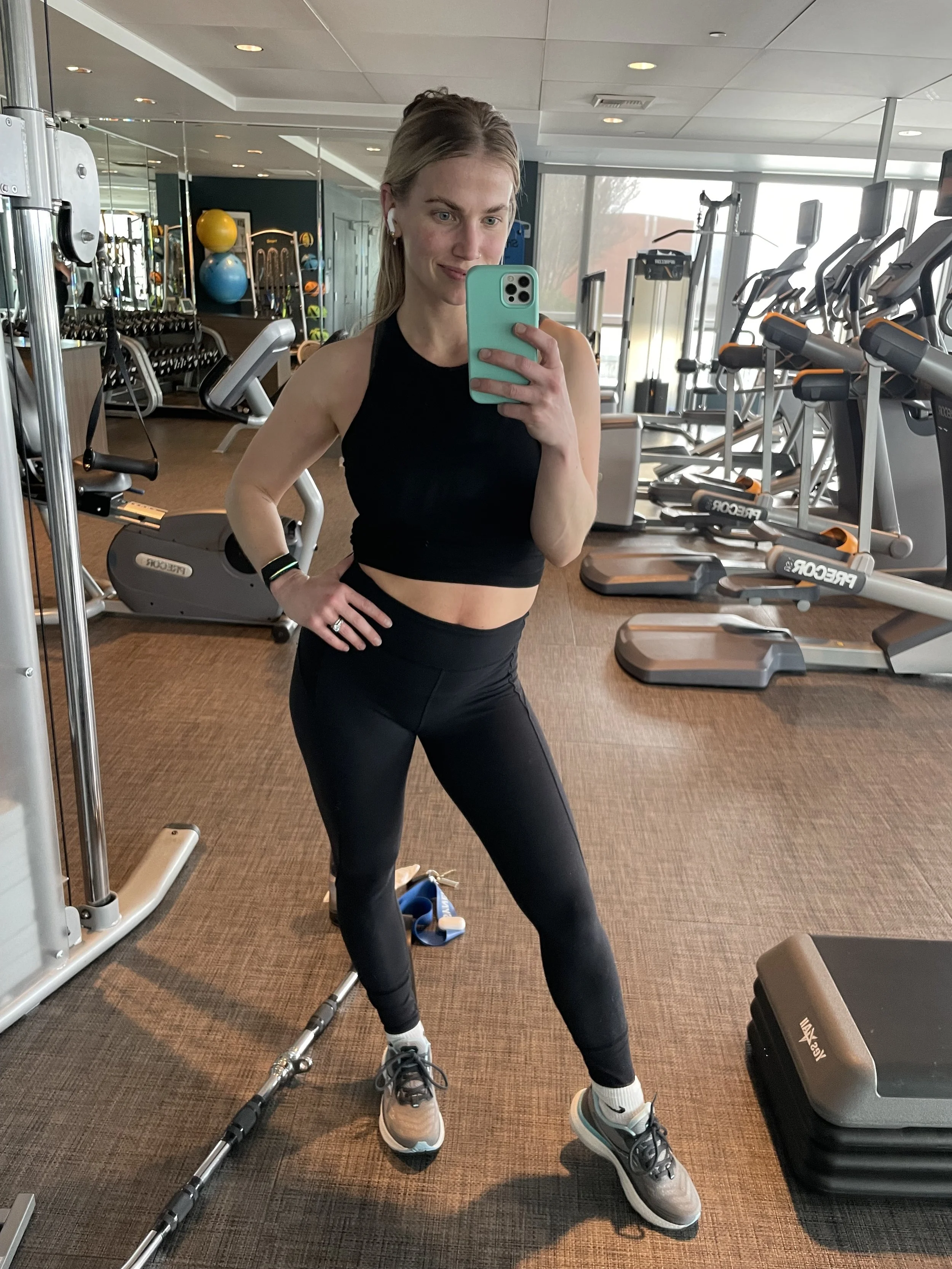Prioritizing Pelvic Health
Returning To Exercise Safely After Birth; A Conversation With A Pelvic Health Physiotherapist
A while back, when I was in the thick of my initial postpartum recovery, I had the chance to chat with a good friend, a former D1 team mate, and now pelvic health physiotherapist, Rachel.
She shared so much insightful information with me, out of the kindness of her heart, knowing that I was very excited to ease my way back into running — an exercise modality I loved pre-baby.
I wanted to share my take-aways from our conversation with you because I feel like talking about pelvic health and the safe return to exercise after growing, carrying, and delivering a baby is SO FREAKING IMPORTANT.
Also, simply normalizing talk about this area of our body without shame or embarrassment — it’s our anatomy and it’s part of what makes women so bad ass.
First things first, your pelvic floor muscles are not muscles that you can see externally. You won’t see them flex like you would your abs or biceps… however, we can flex and see them! Rachel explained, “You just need a mirror or can use the camera on your phone. If you are “flexing” your pelvic floor muscles, aka contracting them or doing a kegel, you should see the opening around the anus squeeze closed, the vagina or tissues around it tighten, and the clitorus ‘nod’.”
For more assitance with visuals, Rachel reccommends checking out a fellow PT’s instragram @mypelvicfloormuscles
I asked Rachel how I could tell if maybe my pelvic floor was still suffering a bit from my labor/delivery:
If I was urinating more that 10+ times daily.
The average, healthy range is 7-9 times – given you are sufficiently hydrating.
2. If I was experiencing Pelvic Organ Prolapse (POP) which is essentially ‘mobility’ in the tissues around the organs that reside in the pelvis. This would signify that my pelvic floor muscles were too weakened to keep the organs in their proper position. There are ways to self-check for this, but we always recommended seeing someone like Rachel – a pelvic health physiotherapist to get checked out!
3. If the muscles were wound up i.e. super tight; pains going to the bathroom and/or sex.
Ultimately, connecting to my body, feeling for abnormalities, and not ignoring first signs of discomfort is where I chose to begin. Rachel described this as listening to your body’s whispers before they become a scream – meaning don’t wait for something to seriously cause you pain before getting yourself checked out. Ask your OB to refer you to a PHP.
“Listening to your body’s whispers before they become a scream”
Rach also gave me some “actionables” to work on regaining pelvic floor strength and endurance before doing workouts like running, which can place a lot of downward pressure on the pelvic floor:
1. Dynamic Training:
-Mind muscle connection to contract each specific area individually:
Urethra → vagina → perineum → anus; it’s not as easy as flexing your bicep vs tricep because, again, you can’t see these muscles without a mirror or your camera phone – but thinking about the specific area as you contract will help more than you think!
-Zipper
Pretend that you're zipping up a zipper that starts at your tailbone, goes up toward the anus, through to the perineum, etc. all the way to the belly button – “keeping the muscles out of the way of the zipper”
-You can reverse the zipper back the other way
2. Strength Work
Attempt to keep an even pressure on one inserted finger during muscle contraction – pull pelvic floor muscles in & up toward belly button.
*Your body should not be visibly moving here, it’s not a crunch.
3. Endurance Work
Repeat the above contraction ^ but focus on the hold for time.
Start with 2 seconds and release
Then progress to 3s holds, and then to 5s holds.
-Quick Flicks
How quickly can you tighten & release pelvic floor muscles?
Go for sets of 10 reps.
*Try this out when you feel the need to pee to work on re-gaining control of the ability to hold it.
I also asked Rach what she’d suggest to someone who wants to retrain their post-partum body to return to running specifically. Below you’ll find her top 7 exercises:
SINGLE LEG SQUATS
HIP BRIDGES
SIDE PLANKS
ALTERNATING BOUNDS
MARCHES
CLAMSHELLS
SIDE LYING HIP ABDUCTION
Attention to form, taking things slowly, and easing back into the workouts you loved pre-pregnancy requires patience, but is definitely worth it. It took nine long months of stretching, transforming, and growing for your baby…so it is going to take TIME to feel and see physical changes.
Consistency over intensity!



